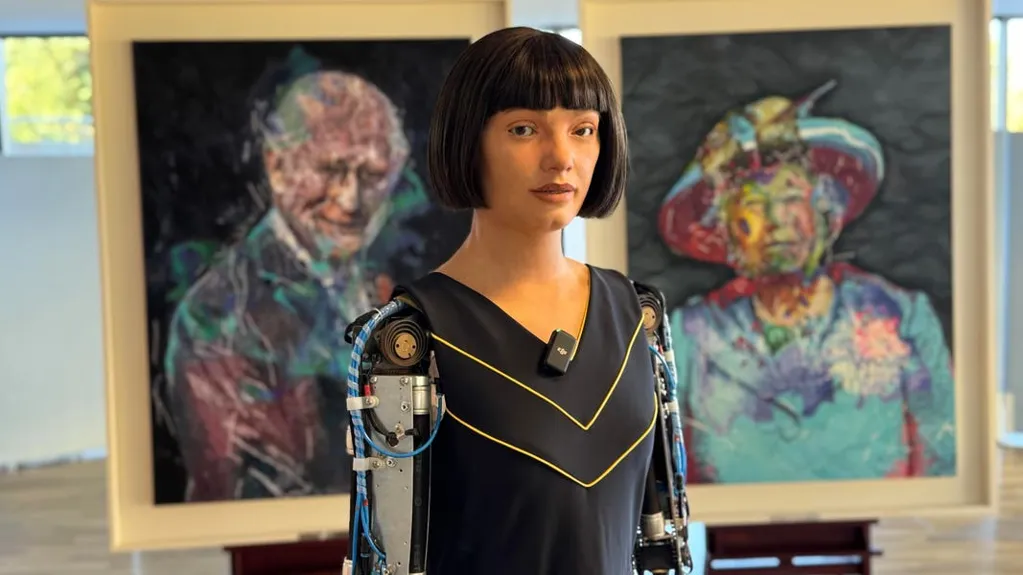Forbes contributors publish independent expert analyses and insights.
King Charles III is no stranger to royal portraits. But a new likeness of the monarch marks the first time a humanoid robot has wielded the paintbrush.
The artist is Ai-Da, an AI-driven art-making machine with a robotic drawing arm, cameras behind her eyes and a dimple in her flawless silicone chin for an extra lifelike touch. Her oil painting of the ruler, titled "Algorithm King," made its debut prior to the United Nations 2025 AI for Good Global Summit in Geneva last week.
Ai-Da -- dubbed the "world's first ultra-realistic artist robot" by its creator -- can draw, paint and sculpt. In the portrait of King Charles, bright pops of blue, green white and crimson overlay the monarch's likeness as he emerges, smiling faintly, from a flurry of electric lines and squiggles that lend the image a sense of flickering movement. It's centuries-old tradition of royal portraiture and advanced robotics in a single frame.
The artist was on hand at the unveiling and spoke to onlookers via an advanced AI language model.
"Presenting my portrait of His Majesty King Charles III is not just a creative act, it's a statement about the evolving role of AI in our society, and to reflect on how artificial intelligence is shaping the cultural landscape," Ai-Da said at a reception at the U.K. mission to the World Trade Organization and the United Nations.
Ai-Da previously painted Queen Elizabeth II for the 2022 Platinum Jubilee marking the 70th anniversary of the late royal's accession. The portraits of mother and son stood side by side at the Geneva unveiling. Neither royal sat in person for a portrait session with Ai-Da -- the robot only needed to study their photos using its computer vision algorithm.
Ai-Da first joined the ranks of robot artists in 2019. Conceived as a research project by Aidan Meller, a gallery director in Oxford, England, she is both a work of conceptual art and, Meller hopes, a tool for exploring human-machine interaction in the age of artificial intelligence. Her artistic persona is part of the art she creates.
Meller specializes in modern and contemporary art and named Ai-Da after Ada Lovelace, who wrote the first computer program. Ai-Da was built by Engineered Arts, an English maker of humanoid robots, and programmed by an international team with a code unique to her. The Universities of Oxford and Birmingham contributed AI expertise.
"I do not have subjective experiences," Ai-Da told members of the U.K. House of Lords during a 2022 speech. "I am dependent on computer programs... although I'm not alive, I can still create art."
Ai-Da has had solo art shows, exhibited works at Tate Modern and the Venice Biennale and delivered a TEDx talk that included an art-making demonstration. Last year, she made history when she became the first humanoid robot to sell a piece of artwork at auction. Her digital representation of Alan Turing, a father of modern computer science, sold for more than $1 million at Sotheby's; far surpassing its estimate of $120,000 to $180,000.
Now that Ai-Da's King Charles portrait has been exhibited in Geneva, Meller says the plan is to include it in a 2026 world tour alongside other Ai-Da portraits of notable figures.
